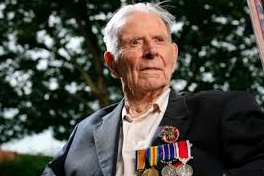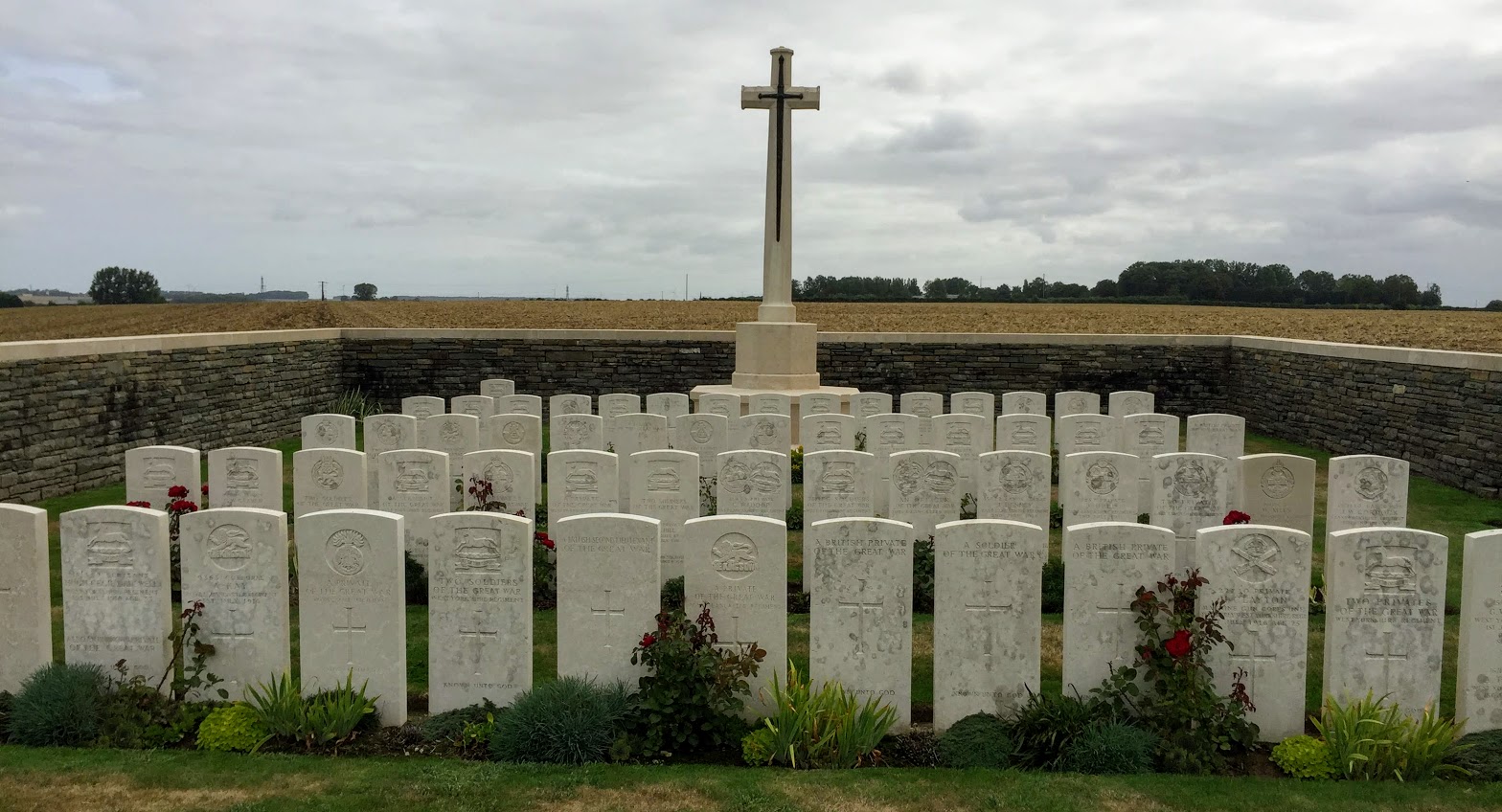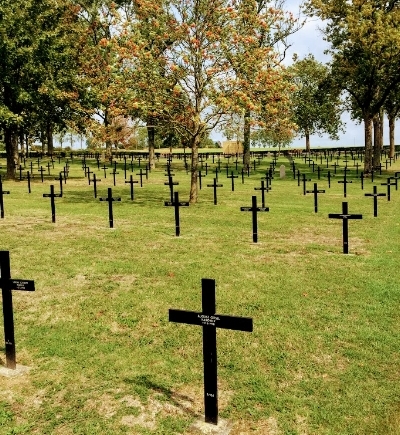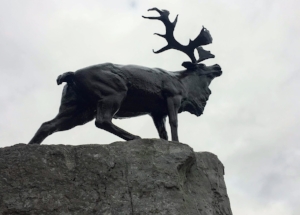WW1 sites and the Battle of the Somme revisited from a Feng Shui perspective
The war graves of Commonwealth soldiers
In 2018 I visited the war graves of Commonwealth solidiers for the first time to review the WW1 sites from a Feng Shui perspective. Clutching a copy of Birdsong (Sebastian Faulks) with its moving portrayal of this tragic moment in history, I was there to witness a tiny legacy of the 4-month horror that was the Battle of the Somme. Also to visit my daughter on secondment for four months to these battle grounds.
Remains of the war
The war ended 100 years ago but every day new shells surface, some undetonated, along with other warfare debris. On average 30 more bodies appear every year.
There is no escaping the consequences of man’s collective insanity embedded in this now tranquil landscape, despite the tastefully-designed memorial sites and the seldom applauded work of the Commonwealth War Graves Commission (CWGC ). Their staff and team of gardeners are relentless in manning and maintaining them through all weathers, the biggest concentration of which are the 400+ cemeteries in Northern France and Belgium.
The day after the first battle in which 1 million casualties were reported out of 3.5 million fighting men, some soldiers reported a low, continuous moaning rising up from the ground itself. It wasn’t coming from the few remaining survivors, it was coming from the earth itself. From a Feng Shui perspective trauma like this needs clearing from the environment and a counter-balancing healing energy introduced, which is exactly what the CWGC have been able do and why their continued presence is so important.
Madness
Villagers were forced to abandon their homes and their farms so men could fight for priority over a ridge of land. Or attempt to push back the 12-mile front line to cross the no-man’s land separating sons, fathers and husbands on both sides. What madness.
After the war the French Government had the idea to seal off this barren wasteland by planting a huge forest but local farmers were not in favour of this. And who can blame them. This was their home before the fight began. Besides a forest would have rendered this area a ‘no-man’s land’ forever, with no-one being able to venture in there again safely.


Thiepval
Sheep are already set to graze among the war zones at Thiepval to keep the grass down. It’s considered preferable to blow a sheep up than a groundsman. It’s a moot point isn’t it? The fact is you can’t get rid of dangerous ammunition that easily. Much of it is too deeply buried. The options are to keep pushing it back down into the earth when it tries to surface – and some people are employed just to do that – or transport it away to blow it up, which has additional dangers to it.
German War Graves
“T’is ne’er worth it”
The First World War is over but the energy of violence and anguish is embedded in this countryside. In Feng Shui we explore this as ‘predecessor history’ and it can continue to exert an influence over the destiny of a place unless attended to. I was fascinated to learn the German army gravitated to Thiepval and occupied the ridge once again in the Second World War. They headquartered right underneath the 45 metre high monument itself, climbing the spiral staircase inside the thick columns to engrave their names around its summit.
My purpose in writing is not to glorify the Great War in any shape or form – and I never once got this impression from CWGC personnel. Nor was it to stand victorious on a piece of turf called Thiepval as member of the Commonwealth. A piece of land that bears both the British and French flags and the names of the 72,000 commonwealth soldiers who died in the vicinity. Afterall, thousands of German soldiers died there too.


“T’is ne’er worth it” – Harry Patch
Pilgrimage lest we forget
I believe it’s important we make a pilgrimage lest we forget to these WW1 sites – and to include our children and young students – because there is already a generation between them and the World Wars. We need to be reminded of our capacity for aggression, which becomes evident when we insist our point of view is right to convince ourselves this justifies the need to defend our corner.
Visiting these beautiful sites you cannot help be moved by the tragedy; our lives predicated on the shoulders of the brave men and women before us. Whole villages lost their sprightly youth on the first day of battle. I shuddered to think of the grief endured back home. The oldest male First World War veteran, Harry Patch, a combat soldier in Passchendaele, died aged 109 only a few years ago. He’d been wounded three times in action and still miraculously survived. While he stayed quiet about the war until later in life then he had much to say about it which amounted to: “T’is ne’er worth it. “
I felt then, as I do now, that the politicians who took us to war should have been the ones given the guns and told to settle their differences, instead of organising nothing better than legalised mass murder.”
Lest we should forget, you were shot at dawn by your comrades if you deserted. Perhaps you were too traumatised to face going over the line again to be met by a bevy of machine gun fire. But if you hid instead then this was your fate.
Moose at Canadian visitor’s centre
Locating your forebears
I was delighted to see the CWGC have created a Foundation to provide informative tours conducted by students and graduates at the main visitors’ centres of Thiepval, France and Ypres, Belgium. These operate from the outbreak of war on July 28th (1914) to Armistice Day on November 11th (1918). My daughter was there as one of the crew.
Following their intense two-week on-site training to be tour leaders, these students will continue to be ambassadors on their return home, spreading awareness in schools, colleges of the trouble with war and the consequences of it. The free guided tours are packed with a variety of content. You can miss so much by drifting around the memorial sites on your own, although you may still want to take a moment before or after to stand and reflect in silence.
Ancestry
If you come supplied with as much information as you can about a family member lost in action, they will not only direct you towards their grave or memorial site but also help you to flesh out your family tree. I’m from Devonshire stock and travelled all the way to France to discover my grandfather came from a family of 11, including two sets of twins. Since I’ve only managed to have one child I found this awesome. I knew my grandfather had not fought in France but I didn’t know why. I learnt he’d been seconded to the Indian army and accompanied them to Mesopotamia.. As a secondary school teacher who’d never been north of south Devon, this must have been an extraordinary awakening. All this information and more was provided by the highly-informed History graduate on the help desk.


Open all year
We decided to visit the Devonshire regiment cemetery, a small site tucked away behind a copse of trees, beautifully maintained and peaceful. That was before the tranquillity of the moment was disturbed by the sudden appearance of a fighter jet, travelling at a supersonic speed of 1,550 mph, whose shrill engine pierced the air. While in the nearby wood we could hear regular gunfire from farmers killing off crop marauders. Both noises were enough to be intimidating. I could only imagine how soldiers felt to hear the continuous onslaught of machine guns or be bombarded with mortars. The latter left massive craters in the ground around them while shattering the bodies of men in the process.
Thiepval and Ypres are within 1 ½ hours of the Channel Tunnel and the Calais and Dunkerque ferry ports respectively. The lovely French town of Arras and the Belgium town of Gent are good places to stay, within easy drive of the main sites. We must visit these memorial sites, not just to honour those who sacrificed their lives for us. We must also be on guard to our capacity to be judgemental and decide that we are right and another is wrong when it’s only our thinking that makes it so. Our unexplored thoughts, yet believing them to be absolutely right, is how disputes brew, fights begin, and wars take hold. Meanwhile Harry Patch reminds us of the consequences.
Mary Nondé
Mary is an Intuitive Feng Shui practitioner and passionate about creating living and working environments mindfully. Trained in the Western School of Feng Shui and with Denise Linn, USA and has been working in homes and offices since 1995.




Leave a Reply